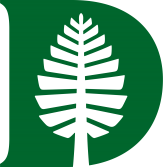The Dartmouth Class of 1989 has partnered with the college, the town of Hanover, NH, several student groups, and a local elementary school to increase the amount of native wildflower habitat for pollinating insects in the community.
This multi-year project will increase pollinator habitat by planting live plants and by seeding native wildflowers on over 12,000 sq. ft. of land around the Dartmouth campus, Hanover, and the Upper Valley. The hope is that this project will serve as a model for cross-disciplinary cooperation, public education, alumni involvement as well as being a pilot for future native habitat reclamations. To date, the project has 10 active planting sites with several more planned for fall, 2022.
Dartmouth Class of 1989 Pollinator Project
Dothan Brook Elementary
Working with Dartmouth's Center for Social Impact & the Growing Change student group, elementary students at Dothan Brook Elementary School (White
Old Dartmouth Cemetery
The town of Hanover, NH, Dartmouth's Provost Office, Dartmouth's Facilities, Operations, and Management, the Class of 1989, and student volunteers
Berry Library
These native wildflower plantings are located in two distinct areas behind Dartmouth's Berry Library. The two areas are highly visible
Class of 1978 Life Sciences Center
Wildflower seeds are being planted at a large, oblong, detention pond adjacent to Dartmouth's Class of 1978 Life Sciences Center.
Organic Farm
The native wildflower planting at Dartmouth's organic farm reclaims a portion of a hillside disturbed by the installation of a
Map of Planting Sites
The Dartmouth Class of 1989 has partnered with the college, the town of Hanover, NH, several student groups, and a
Town of Hanover
These native wildflower plantings are in two distinct areas in downtown Hanover, NH: a wildflower area next to the Marshall
Collis Center
Wildflower seeds are being planted at a 30' x 15' area adjacent to Dartmouth's Collis Center. This 450 square feet
Highlights
Recognizing the critical importance of pollinating insects like bees, butterflies, moths, beetles, and birds in supporting healthy ecosystems, agricultural systems,
Kemeny Courtyard
This native wildflower planting is a long, narrow strip located next to a granite wall in the Kemeny Courtyard behind
 Copyright 2021 - 22 Dartmouth College, Class of 1989 Service Initiatives Page © All rights reserved
Copyright 2021 - 22 Dartmouth College, Class of 1989 Service Initiatives Page © All rights reserved 
